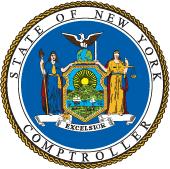April Sales Tax Collections Decline Over 24 Percent After COVID-19 Shutdown
Plummeting sales tax collections were widespread, leaving counties, cities and some other local governments short by about $327 million compared to last year. Although the first quarter of 2020 was relatively strong, March sales tax collections had already begun to show the impact of the COVID-19 shutdown–a decrease of 3.7 percent statewide with the largest declines downstate. The April figures show shrinking revenues for local governments throughout the state.
